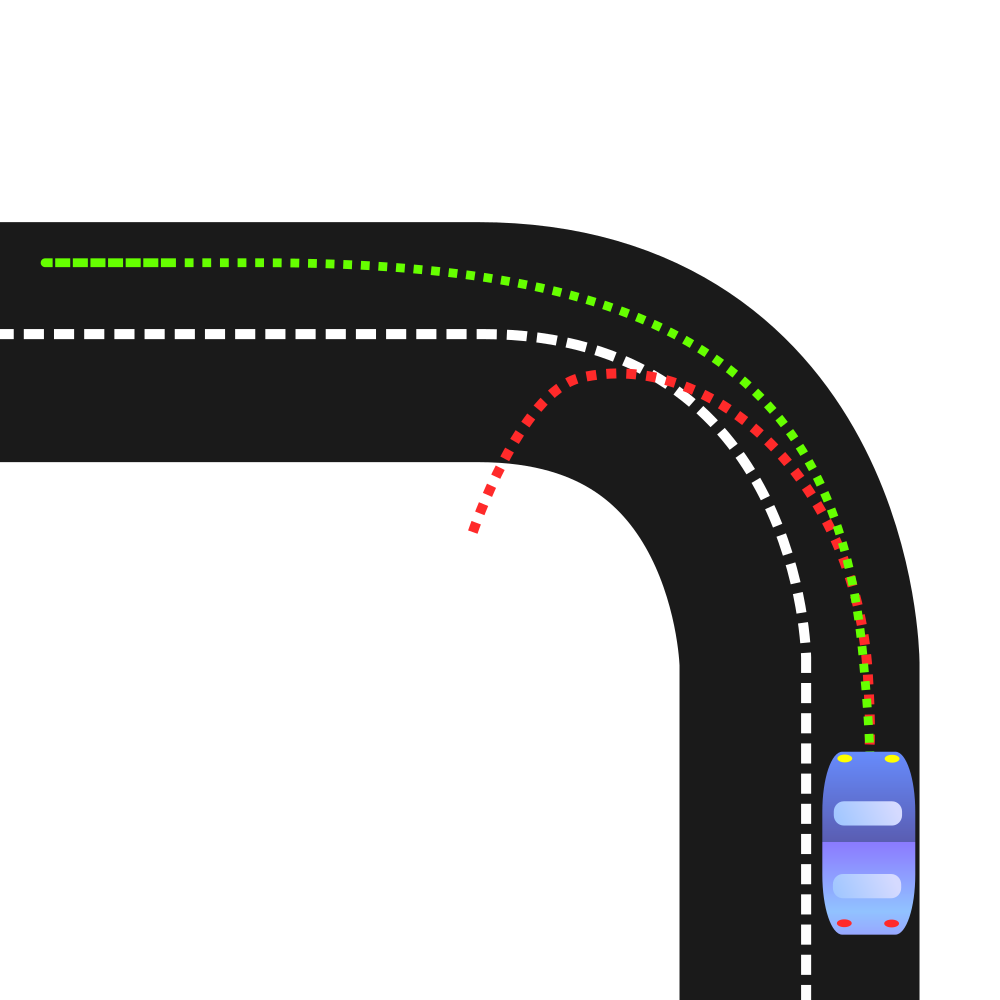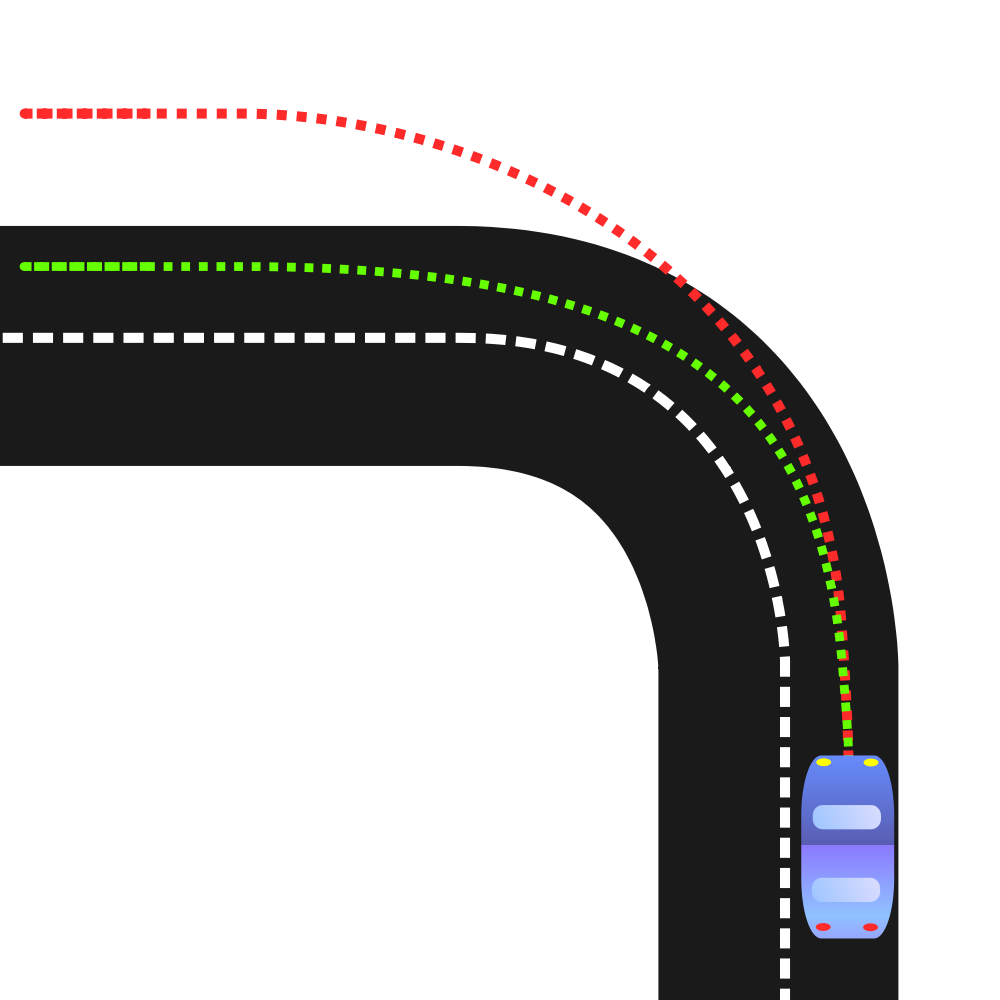Oversteer and understeer: What's the difference?

Oversteer and understeer is a phenomenon that occurs when driving a car and driving around corners at higher speeds or in unfavorable road conditions. As we all know from the previous articles, the vehicle can only get two types of skids: oversteer or understeer.
In a nutshell, if the front axle loses traction, it is an understeer skid. If the rear axle loses traction, it is an oversteer skid. Of course, there are situations when all four wheels of the car lose traction. Every skid always starts either with the loss of adhesion of the front axle wheels or the loss of adhesion of the rear axle wheels.
Indholdsfortegnelse
So let's talk about how oversteer and understeer skid occurs and how both types of skid can be managed.
How does overturning skid occur?

During an oversteer skid, the front tires have more grip than the rear ones. In this case, there are situations where the rear axle of the car skids when driving around a corner at high speed or when suddenly changing direction.
The cause of the car's oversteer behavior is the loss of grip of the wheels on the rear axle. This means that during an oversteer skid, the front part of the car willingly turns into a corner, but the rear part continues in the original direction. This causes the car to spin in the opposite direction or out of control, making an unwanted U-turn. The name oversteer is thus derived from the vehicle turning too much during an oversteer.
Unlike an understeer skid, in which the vehicle continues in a straight line, in an oversteer skid, the vehicle begins to rotate around its own axis. With solid rotation and understeer, the vehicle can fly off the road on the outside edge of the curve.
In which cars is oversteer skid more common?
As a rule, oversteer appears in cars with rear-wheel drive, but vehicles with front-axle drive are no exception. In the case of a vehicle with front-wheel drive, it is quite complicated and dangerous to achieve an oversteer skid.
Getting an oversteer skid on a vehicle without a driven rear axle is dangerous because there is no way to control it.
How to handle an oversteer skid?
Mastering an oversteer skid is not as easy as mastering an understeer skid. It requires much more experience and careful work with the steering wheel and the gas pedal.
If your car gets an oversteer skid, it is necessary to sharply turn the steering wheel to the opposite side of the course of the turn. This means that you point the front wheels of your car out of the corner. By doing so, it is possible to eliminate the change of the vehicle's axis, which will allow the car to continue on its original trajectory, but only sideways.
Subsequently, depending on the situation, it is possible to correct the slippage of the rear axle by pressing or releasing the accelerator pedal. Adding a throttle can direct the rear of the vehicle when skidding in a large radius corner, but taking off the throttle will help you gain grip when skidding in small radius corners.
However, suppose the reaction to the oversteer slip is disproportionate. In that case, the vehicle may immediately experience another oversteer slip, throwing the rear part of the vehicle to the opposite side after gaining traction and turning too much to the axis of the road. We do not recommend doing any of the above unless you're experienced enough and, as always, at your own risk.
The danger of oversteer skid
The danger of an oversteer skid lies in the complexity of its management. This is because pressing or releasing the accelerator pedal usually does not always solve the situation. Carefully pressing/releasing the accelerator pedal and turning the car's steering wheel at the right moment is necessary to overcome the oversteer skid.
However, suppose a vehicle not driven by the rear axle gets an oversteer skid. In that case, it is practically impossible to manage such a skid because the driver has no means of influencing the adhesion capabilities of the rear axle.
How does understeer slip occur?

The cause of the understeer is the loss of grip of the wheels on the front axle. In case of understeer, the car does not react adequately when turning the steering wheel. Thus, the vehicle continues in a straight direction when understeer and does not follow the angle of the steering wheel.
Understeer skid usually occurs when turning the vehicle with a change of the moment acting on the front wheels. The greater the change of the moment acting on the wheels, the greater the probability of skidding.
In the case of an understeer skid, the front wheels do not lead the car into a turn despite their turning because the front axle lost traction. If the vehicle does not regain contact with the road, it will uncontrollably fly off the outer edge of the curve.
However, an understeer skid cannot occur on a vehicle that accelerates from a standstill. When the vehicle is stationary, no force will push the car forward if the tires lose grip.
How to handle an understeer skid?
To get the vehicle out of an understeer skid, simply release the accelerator pedal and wait for the wheels on the drive axle to regain grip. It is not recommended to suddenly press the brake pedal or turn the steering wheel excessively, as this could lead to an even greater loss of tire grip.
When turning the wheels, there is a risk that after the front wheels regain their grip, they will start to roll again on the road, which will cause a sharp change in the direction of the vehicle. This change of direction can lead to an oversteer skid, which requires a lot of experience and is very dangerous on a front-wheel drive vehicle.
If an understeer skid occurs on a vehicle with a rear drive axle, it is usually enough to reduce the pressure on the brakes or align the wheels of the front axle to eliminate the skid.